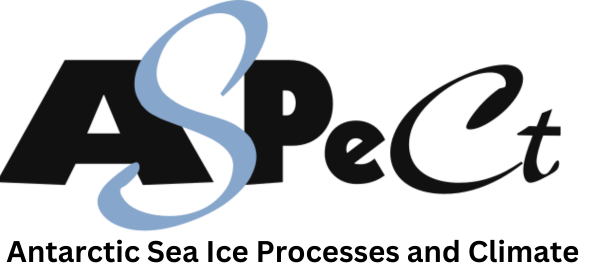Resources for ASPeCt shipboard observations
ASPeCt sea-ice cards
- manual for shipboard observations
IceBox
- ASPeCt sea-ice data software
ASPeCt data sheets
- to record sea-ice observations
ASPeCt comments sheet
- to record sea-ice observations
ASPeCt sea-ice codes
- also included in the sea-ice cards
ASPeCt weather codes
- also included in the sea-ice cards
The ASPeCt protocol for shipboard observations is built around baseline sea-ice variables, including:
- Sea-ice concentration: the fraction of ocean surface covered by each of the three dominant categories of sea ice.
- Sea-ice type (i.e., categories of sea ice. Also known as stage of development).
- Sea-ice and snow thickness estimates (from overturned floes).
- Floe size: classified into approximately logarithmic-spaced bins.
- Topography: Area and sail height of ridging. Topography also includes descriptors for the state of consolidation and for weathering of ridges.
- Snow Type: a descriptor of the sea-ice surface, used primarily for estimating area-averaged surface albedo.
- Open Water: a descriptor of the shape and size of gaps in the sea ice.
Refer to the ASPeCt sea-ice cards for specific instructions to classify sea ice, and record and compile data in IceBox software.
Observers may also be asked to estimate ice and snow thicknesses for 25 randomly-selected overturned floes every hour. The sea-ice cards describe how to estimate thickness.
This page also includes links to data sheets and software, and links to other shipboard observation methods including the original ASPeCt methods, IceWatch - the ASPeCt protocol adapted for the Arctic, and MANICE which is the Candadian Ice Service's manual for observing sea ice.
